#Cristina Galbó
Explore tagged Tumblr posts
Text














Supernatural (1981)
#supernatural#sobrenatural#eugenio martin#cristina galbó#horror#80s horror#spanish horror#supernatural horror#ghost story#haunted house#1980s#1980s horror#scream queen#women in horror#final girl#horror actress#horror director#euro horror#horrorstills
385 notes
·
View notes
Text

La residencia (1969)
AKA The House That Screamed, The Boarding School, The Finishing School, House of Evil
#la residencia#the house that screamed#lilli palmer#cristina galbó#john moulder brown#1960s movies#narciso ibáñez serrador#horror#pressbook
58 notes
·
View notes
Text
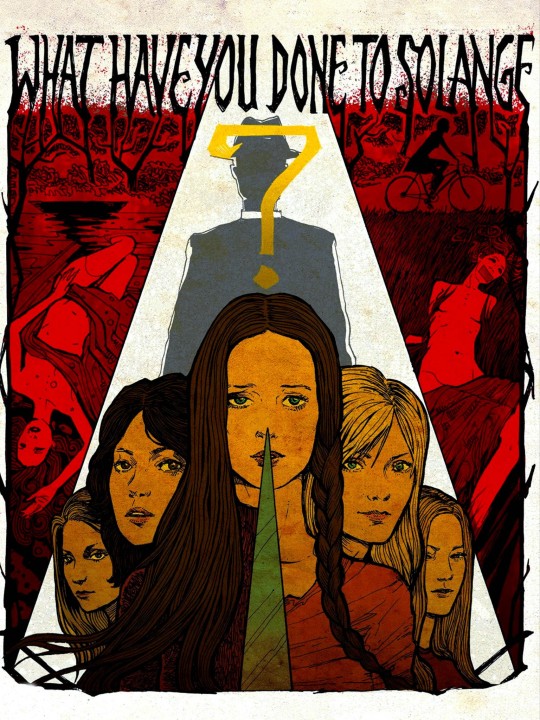
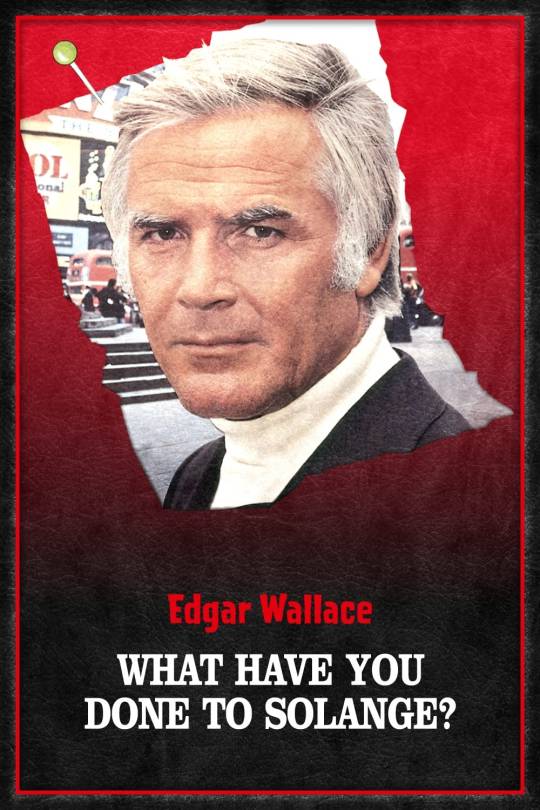
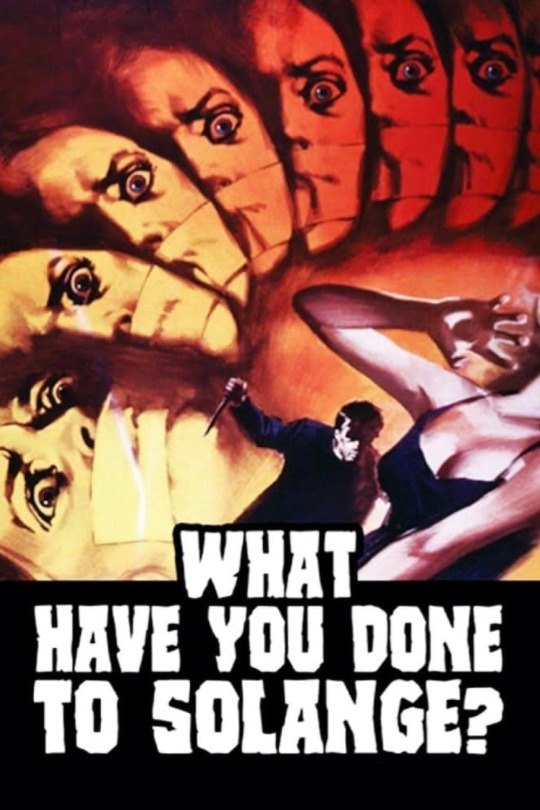
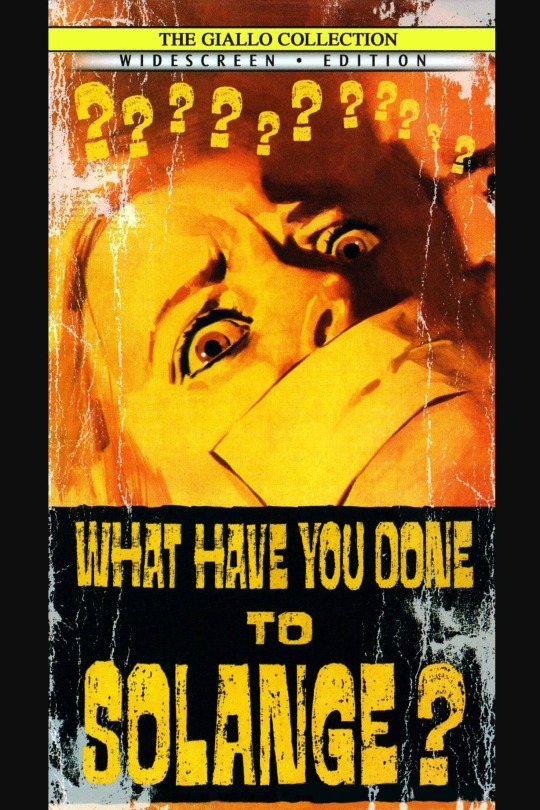
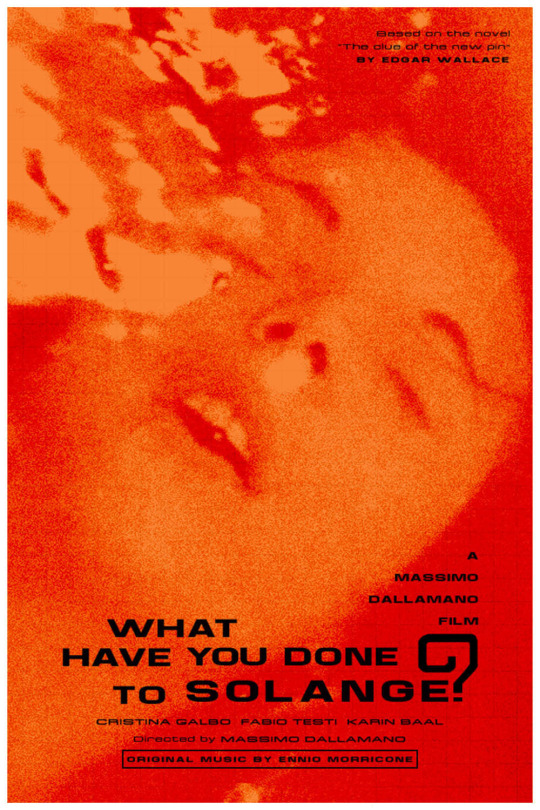
W A T C H I N G
#What Have You Done to Solange? (1972)#fabio testi#Karin Baal#Joachim Fuchsberger#Cristina Galbó#camille keaton#Günther Stoll#Claudia Butenuth#Massimo Dallamano#Cosa avete fatto a Solange?#watching#slasher#mystery#horror#Giallo film
0 notes
Text
§ 3.314. No profanar el sueño de los muertos (Jorge Grau, 1974)

Al parecer es un clásico del cine de zombies. Encargo por un productor, se rodó por quien había sido ayudante de cámara de Leone, entre otros. El color funciona muy bien. Tiene fondo y está muy bien construida. Como todas del género, es exagerada y algo amanerada. Tienes que creerte sus premisas, naturalmente. Pero es buena. No es la de Cesar Romero, pero es que la de Cesar Romero es única, es la mejor y sirvió para que se crease todo un género, aunque ya había habido precedentes más que interesantes.
El reparto se apoya en tres actores: Cristina Galbó, que desconocía quién era aunque la vi en La Residencia, de Ibañez Serrador, de 1969, Ray Lovelock, que tampoco recuerdo haberle visto en nada, y Arthur Kennedy, un mito del cine que rodaba sus últimas cosas, inolvidable en La aurora desnuda, de Ulmer de 1955.
Tiene pasta de película mítica. Bien rodada, con continuidad y todo un universo propio que expone el director de manera más que solvente.
Me ha encantado. Es fresca, nueva, intensa, diferente.
1 note
·
View note
Photo

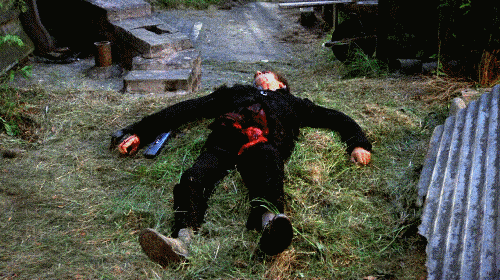
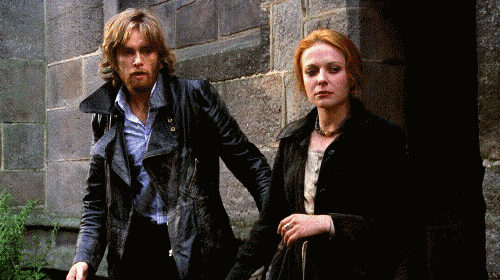
The Living Dead at Manchester Morgue (1974) aka Non si Deve Profanare il Sonno dei Morti aka Let Sleeping Corpses Lie Star Films S.A. / Flaminia Produzioni Cinematografiche Dir. Jorge Grau
Cristina Galbó as Edna Simmonds Ray Lovelock as George Meaning
31 notes
·
View notes
Photo






Let Sleeping Corpses Lie (1974)
#let sleeping corpses lie#horroredit#The Living Dead at Manchester Morgue#jorge grau#cristina galbó#no profanar el sueño de los muertos#70s horror#Horror Movies#filmedit#horror#70s#31daysofhalloween
207 notes
·
View notes
Text
Preview: The House That Screamed (Bluray)
Preview: The House That Screamed (Bluray)
Spain’s first major horror film production, The House that Screamed is a stylish gothic tale of tortured passions and bloody murder that bridges the bloody gap between Psycho and Suspiria. Thérèse (Cristina Galbó) is the latest arrival at the boarding school for wayward girls run under the stern, authoritarian eye of Mme Fourneau (Lilli Palmer). As the newcomer becomes accustomed to the strict…

View On WordPress
2 notes
·
View notes
Photo





What Have You Done to Solange? (1972) dir. Massimo Dallamano
#What Have You Done to Solange?#Cosa Avete Fatto a Solange#Massimo Dallamano#Cristina Galbó#Fabio Testi#Camille Keaton#Movies#Giallo#horroredit
54 notes
·
View notes
Photo

#the living dead at manchester morgue#jorge grau#cristina galbó#terror movie#zombie movie#70's movie#cinema
7 notes
·
View notes
Photo



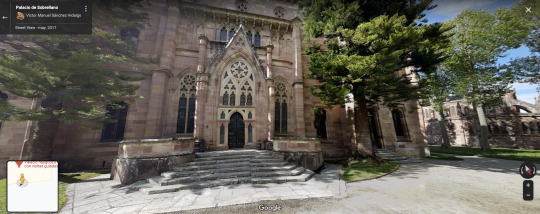
La residencia / The House That Screamed Narciso Ibáñez Serrador. 1969
Boarding School Palacio de Sobrellano, Barrio Sobrellano, s/n, 39520 Comillas, Cantabria, Spain See in map
See in imdb
#narciso ibáñez serrador#narciso ibañez serrador#chicho ibañez serrador#la residencia#the house that screamed#the boarding school#lilli palmer#john moulder-brown#school#mary maude#cristina galbó#movie#cinema#film#location#google maps#street view#1969
38 notes
·
View notes
Text

2 notes
·
View notes
Text






Cristina Galbó in Supernatural (1981)
#one of the MOST underrated scream queens in euro horror#Cristina Galbó#supernatural#sobrenatural#eugenio martin#horror#spanish horror#supernatural horror#1980s horror#scream queen#final girl#horror actress#horror director#horrorstills
10 notes
·
View notes
Text
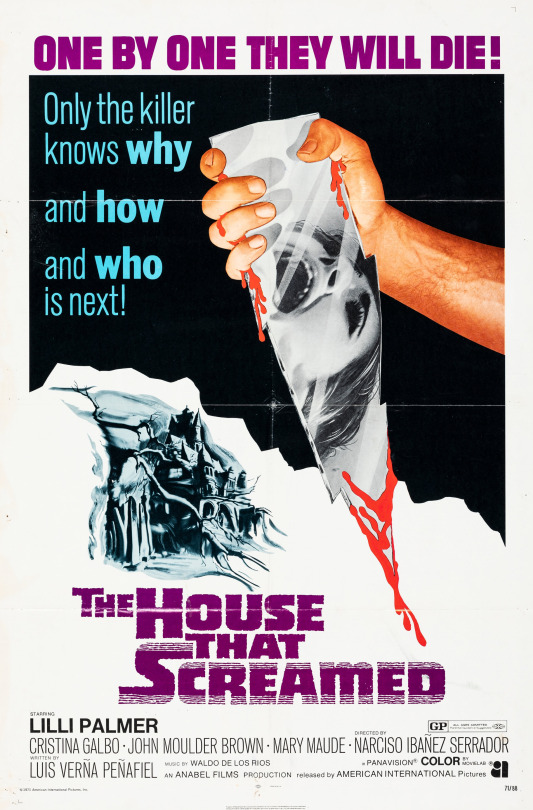
La residencia (1969)
AKA The House That Screamed, The Boarding School, The Finishing School, House of Evil
#la residencia#the house that screamed#lilli palmer#cristina galbó#john moulder brown#1960s movies#narciso ibáñez serrador#movie posters
68 notes
·
View notes
Video
youtube
Let Sleeping Corpses Lie
1974
...also known as The Living Dead at the Manchester Morgue and Don't Open the Window, is a 1974 Spanish-Italian science fiction zombie horror film written and directed by Jorge Grau and starring Ray Lovelock, Arthur Kennedy and Cristina Galbó. [wiki]
The scenes featuring the outside of the hospital were shot at Barnes Hospital in Cheadle, Greater Manchester. [...] The opening montage was filmed in Manchester city centre. [wiki]
#manchester#1974#cheadle#lake district#let sleeping corpses lie#the living dead at the manchester morgue#don't open the window#film#jorge grau#ray lovelock#arthur kennedy#cristina galbó#barnes hospital#manchester cathedral#cathedral#wikipedia#link#1970s#video#youtube
2 notes
·
View notes
Video
youtube
Ennio Morricone (1928-2020)’s haunting opening theme to the 1972 Italian Giallo mystery, “What Have You Done to Solange?”
“Ennio Morricone, OMRI[1] (Italian: [ˈɛnnjo morriˈkoːne]; 10 November 1928 ��� 6 July 2020) was an Italian composer, orchestrator, conductor, and trumpet player who wrote music in a wide range of styles. Morricone composed over 400 scores for cinema and television, as well as over 100 classical works. His score to The Good, the Bad and the Ugly (1966) is considered one of the most influential soundtracks in history[2] and was inducted into the Grammy Hall of Fame.[3] His filmography includes over 70 award-winning films, all Sergio Leone's films since A Fistful of Dollars, all Giuseppe Tornatore's films since Cinema Paradiso, The Battle of Algiers, Dario Argento's Animal Trilogy, 1900, Exorcist II, Days of Heaven, several major films in French cinema, in particular the comedy trilogy La Cage aux Folles I, II, III and Le Professionnel, as well as The Thing, Once Upon A Time In America, The Mission, The Untouchables, Mission to Mars, Bugsy, Disclosure, In the Line of Fire, Bulworth, Ripley's Game and The Hateful Eight.[4]After playing the trumpet in jazz bands in the 1940s, he became a studio arranger for RCA Victor and in 1955 started ghost writing for film and theatre. Throughout his career, he composed music for artists such as Paul Anka, Mina, Milva, Zucchero and Andrea Bocelli. From 1960 to 1975, Morricone gained international fame for composing music for Westerns and—with an estimated 10 million copies sold—Once Upon a Time in the West is one of the best-selling scores worldwide.[5] From 1966 to 1980, he was a main member of Il Gruppo, one of the first experimental composers collectives, and in 1969 he co-founded Forum Music Village, a prestigious recording studio. From the 1970s, Morricone excelled in Hollywood, composing for prolific American directors such as Don Siegel, Mike Nichols, Brian De Palma, Barry Levinson, Oliver Stone, Warren Beatty, John Carpenter and Quentin Tarantino. In 1977, he composed the official theme for the 1978 FIFA World Cup. He continued to compose music for European productions, such as Marco Polo, La piovra, Nostromo, Fateless, Karol and En mai, fais ce qu'il te plait. Morricone's music has been reused in television series, including The Simpsons and The Sopranos, and in many films, including Inglourious Basterds and Django Unchained. He also scored seven Westerns for Sergio Corbucci, Duccio Tessari's Ringo duology and Sergio Sollima's The Big Gundown and Face to Face. Morricone worked extensively for other film genres with directors such as Bernardo Bertolucci, Mauro Bolognini, Giuliano Montaldo, Roland Joffé, Roman Polanski and Henri Verneuil. His acclaimed soundtrack for The Mission (1986)[6] was certified gold in the United States. The album Yo-Yo Ma Plays Ennio Morricone stayed 105 weeks on the Billboard Top Classical Albums.[7]Morricone's best-known compositions include "The Ecstasy of Gold", "Se Telefonando", "Man with a Harmonica", "Here's to You", the UK No. 2 single "Chi Mai", "Gabriel's Oboe" and "E Più Ti Penso". In 1971, he received a "Targa d'Oro" for worldwide sales of 22 million,[8] and by 2016 Morricone had sold over 70 million records worldwide.[9] In 2007, he received the Academy Honorary Award "for his magnificent and multifaceted contributions to the art of film music." He was nominated for a further six Oscars. In 2016, Morricone received his first competitive Academy Award for his score to Quentin Tarantino's film The Hateful Eight, at the time becoming the oldest person ever to win a competitive Oscar. His other achievements include three Grammy Awards, three Golden Globes, six BAFTAs, ten David di Donatello, eleven Nastro d'Argento, two European Film Awards, the Golden Lion Honorary Award and the Polar Music Prize in 2010. Morricone has influenced many artists from film scoring to other styles and genres, including Hans Zimmer,[10] Danger Mouse,[11] Dire Straits,[12] Muse,[13] Metallica,[14] and Radiohead.”
“What Have You Done to Solange? (Italian: Cosa avete fatto a Solange?) is a 1972 giallo film directed by Massimo Dallamano, and starring Fabio Testi, Karin Baal, Joachim Fuchsberger, Cristina Galbó, and Camille Keaton. The plot follows a series of violent murders occurring at a Catholic girls' school in England where a young student has gone missing.The film is a co-production between Italian production companies Italian International Films S.r.l., Clodio Cinematografica and West German company Rialto Film.”
#RIP Ennio Morricone#ennio morricone#giallo#What Have You Done to Solange?#Massimo Dallamano#Italian Cinema#Italian Cult Movies#Cult Movies#Fabio Testi#Joachim Fuchsberger#Cristina Galbó#Camille Keaton#Music#Film Music
4 notes
·
View notes
Photo







Let Sleeping Corpses Lie (1974)
#let sleeping corpses lie#horroredit#the living dead at manchester morgue#jorge grau#cristina galbó#ray lovelock#no profanar el sueño de los muertos#zombies#70s horror#filmedit#horror#70s
119 notes
·
View notes